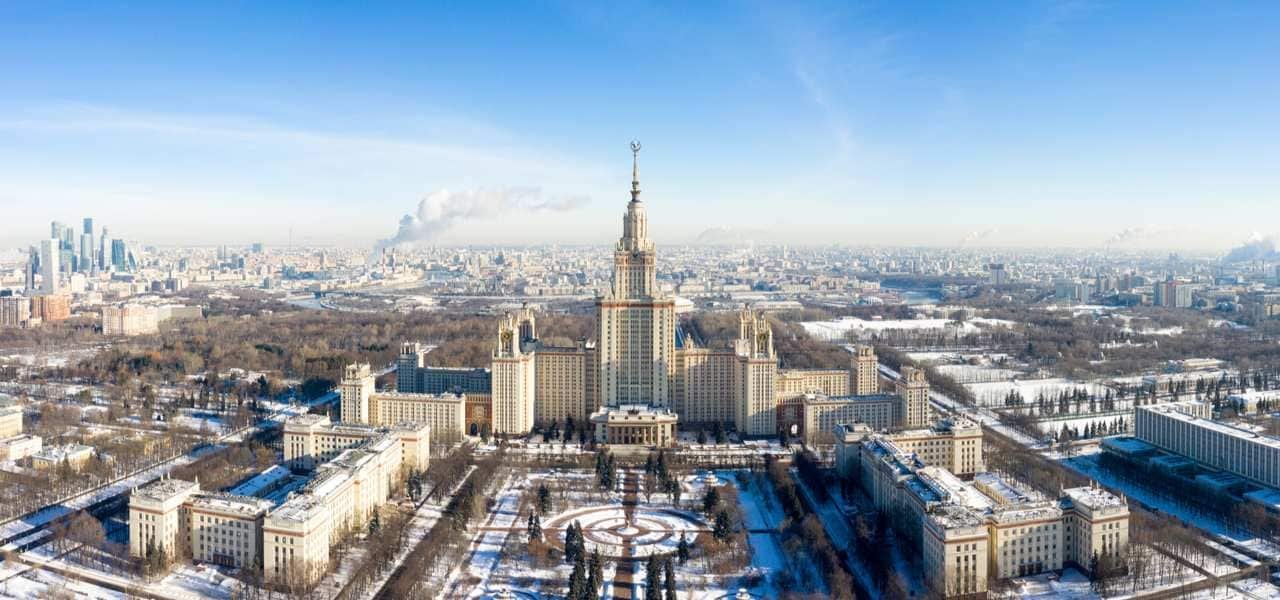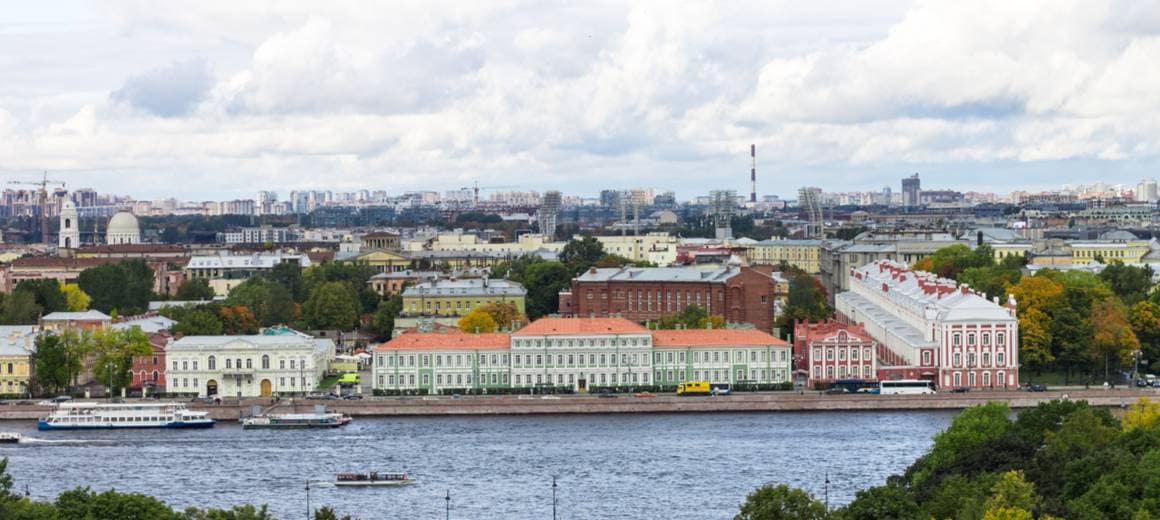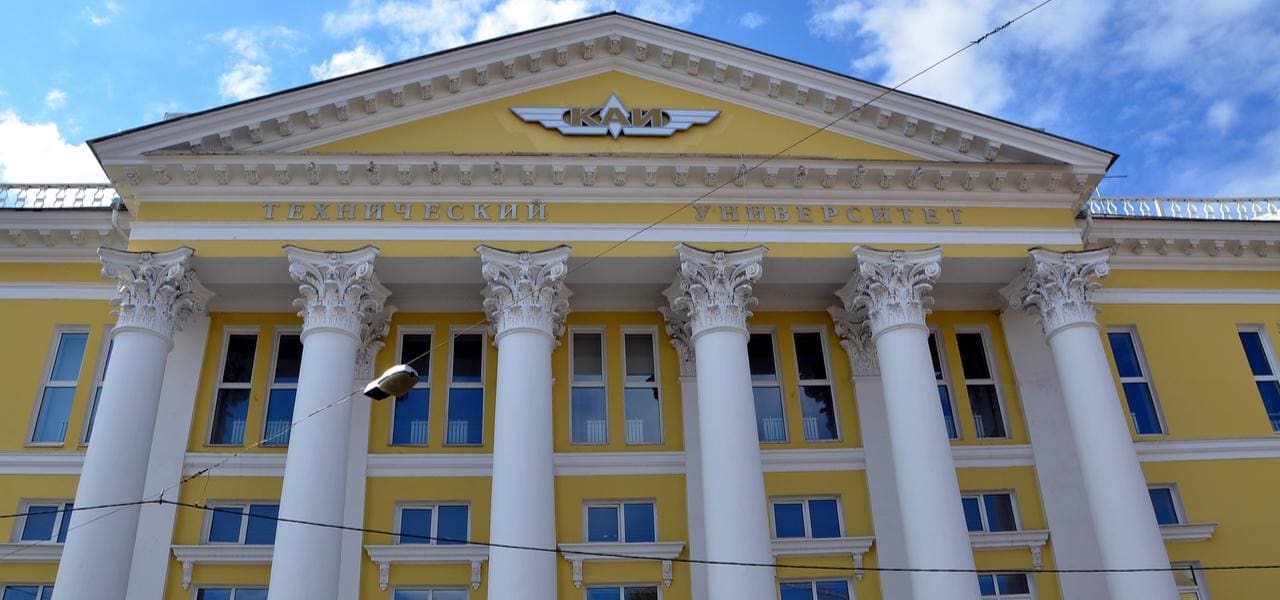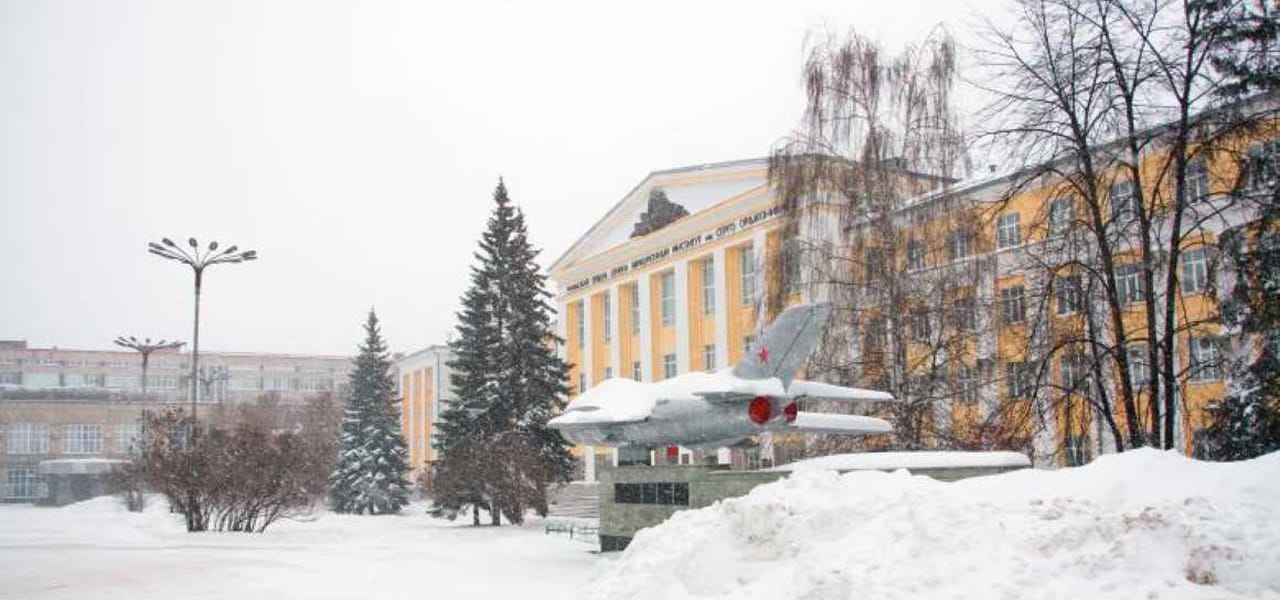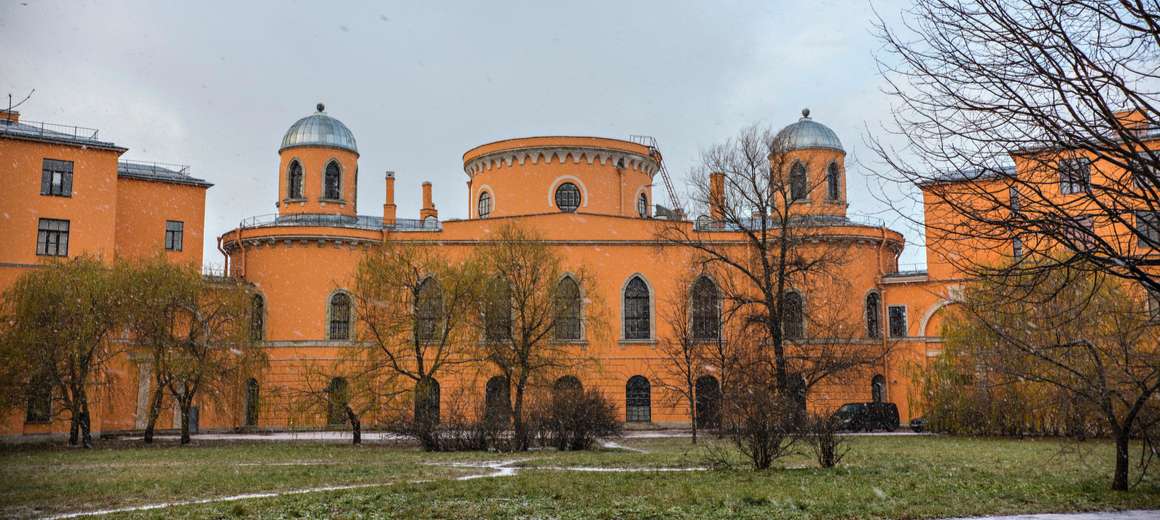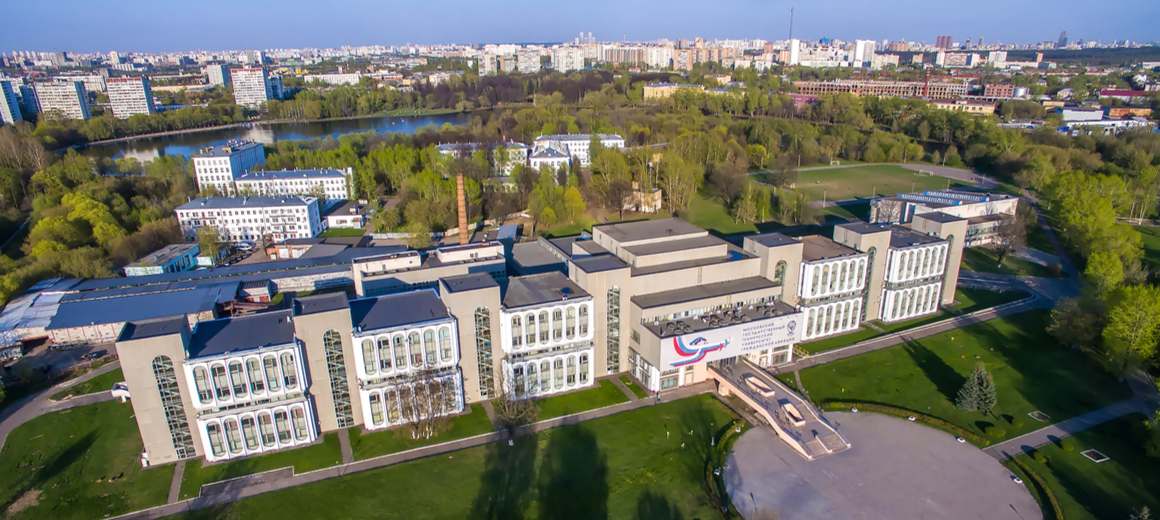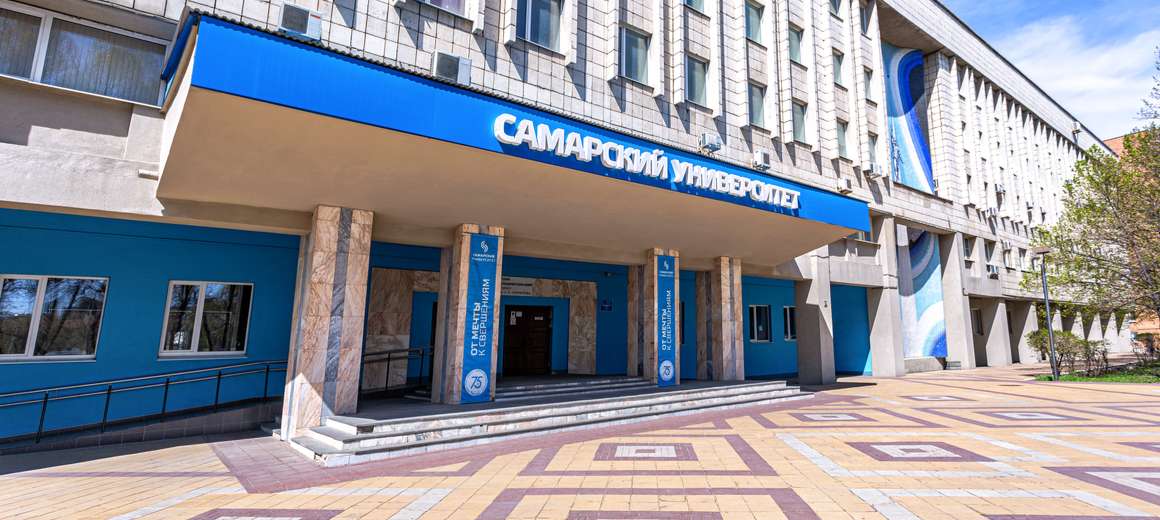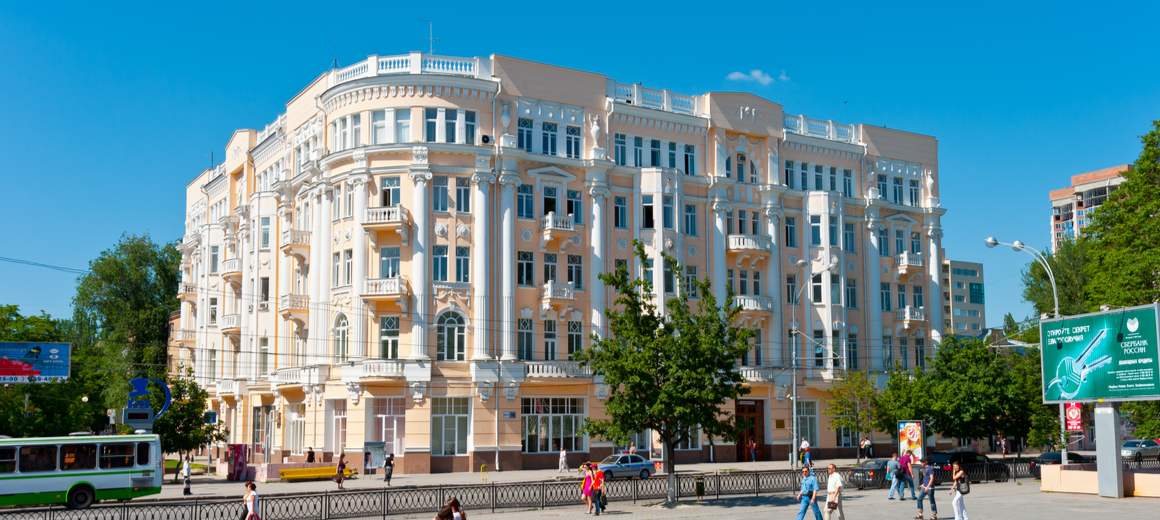Comparative analysis of the top aviation courses in Russia, with extensive information about universities and their aviation degrees
2. Summary of findings in a comparative table
3. History of aviation education and aviation universities in Russia
4. Aviation courses at top universities in the Russia
Saint Petersburg State University of Civil Aviation
Moscow Aviation Institute (National Research University)
Kazan National Research Technical University
Ufa State Aviation Technical University
Saint Petersburg State University of Aerospace Instrumentation
Bauman Moscow State Technical University
Peter the Great St. Petersburg Polytechnic University
Moscow State Technical University of Civil Aviation
Samara State Aerospace University (National Research University)
1. Introduction
More people and goods are being transported by air than ever before; a trend that’s expected to continue into the future[1]. The sustained demand for air transportation offers promising job prospects for commercial and private airline pilots, aircraft manufacturers and airport employees.
In addition, innovations in aircraft manufacturing and emerging technologies are opening up new fields and career opportunities for aviation mechanics and aerospace professionals. In Russia, aircraft manufacturing is an important industrial sector[2], employing over 355,000 people. Russia’s aircraft portfolio includes a number of internationally competitive military aircraft, such as the MiG-29 and Su-27; along with projects for new aircraft like a “Russified” Sukhoi Superjet 100[3], which is expected to launch in 2020 and compete with the Antonov An-148, Embraer E-Jet and Airbus A220. The Russian narrow-body MC-21-300 airliner[4], manufactured by United Aircraft Corporation (UAC), is well into its flight-test program and could lower operating costs by about $2 million a year compared to the new Airbus A320 and Boeing 737.
According to a representative from the Sukhoi Civil Aircraft Company, one of the biggest challenges facing the aviation and aeronautics industry today is putting together a team capable of building civil aircraft[5]. Along with this clear demand for aviation professionals, there is a push to strengthen Russia’s strategic competitive position in the domestic and foreign civil aviation markets[6]. In 2014, the Russian government adopted the Federal Target Program (FTP), which aims to create a new world center for aircraft building and corner at least 5% of the world market for sales of civil aviation equipment by 2025.
There is a bright future waiting for students setting out on a career in aviation and aeronautics. Studying for a degree is a financial commitment and can take as many as four years to complete, so it’s important to choose the best university for your needs.
This comparative analysis of a cross-section of 10 Russian aviation universities offers prospective students key information and insights into the different undergraduate courses available. The report is presented in four sections: a comparative table summary of each university’s offerings; a brief history of aviation education in Russia; additional information on each university’s aviation courses; and thoughts on the future of aviation and how this will affect aviation and aeronautics training in years to come.
2. Summary of the top aviation courses at Russian universities
University |
World ranking 2017 |
Aviation degrees offered |
Aviation facilities |
Cost per year of studies |
Approximate Cost of accommodation per year |
Course length |
|---|---|---|---|---|---|---|
Saint Petersburg State University of Civil Aviation |
- |
Bachelor of Science Degrees: Aviation and Piloting Aviation and Space Technology Air Navigation Operation of Airports and Security of Aircraft Master of Science Degrees: Aircraft Engineering Operations of Airports and Ensuring Flights of Aircraft Air Navigation State Regulation of the Use of Airspace Organization of Air Traffic and Airspace Use Flight Work Management Programs Operational Safety Audit Aviation Security Management Management of Personnel and Social Policy in Air Transport Management of Production and Financial Activities of Air Transport Organizations Management of Business Projects in Air Transport Commercial Activities in Air Transport |
Theoretical pilot training only |
Between $2000 and $4000 |
$440 ‒ $515 |
BsC is 4-5 years MsC is 2 years |
Moscow Aviation Institute (National Research University) |
131-140 |
Bachelor of Science Degrees: International Bachelor of Science in Spacecraft Engineering International Bachelor of Science in Aircraft Engineering International Bachelor of Science in Propulsion Engineering Masters of Science Degrees: International Master of Science in Spacecraft Engineering International Master of Science in Aircraft Engineering International Master of Science in Control Systems and Computer Science in Engineering International Master of Science in Propulsion Engineering |
Research Laboratory ‘Aerobatic Displays and the system of Pilot - Aircraft’ Research Centre of specialised Electronic Systems & Management Scientific and Manufacturing complex of computer science Resource Centre of Aviation Project Design Centre of Aeronautical Engineering Technology Special Design office of Experimental Aircraft Airdrome |
All courses cost $4,400 in Russian or $6,000 in English |
$1,080 |
BsC 4 years MsC 2 yearsyear |
Kazan National Research Technical University |
151-200 |
Engineering Science Degrees: Aircraft and Helicopter Engineering Design of Aircraft and Jet Engines Bachelor of Science Degrees: Heat-Power and Energy Engineering Power Machinery Engineering Mechanical Engineering Design and Engineering Support for Machinery Production Materials Science and Technology Maintenance of Transport and Technological Complexes Aeronautical Engineering Aircraft Engines Technical Maintenance of Aircrafts and Engines Masters of Science Degrees: Computer and Systems Engineering Heat-Power and Energy Engineering Design and Engineering Support for Machinery Production Applied Physics Materials Science and Technology Aeronautical Engineering (offered in four majors: Aircraft Design and Structure, Dynamics and Strength of Aircraft Structure Elements, Aerodynamic Design of Aircraft, and Aircraft Manufacturing Process) Aircraft Engines (offered in two majors: Design and Construction of Aircraft Engines and Power Facilities, and Design of Jet Engines with Solid Fuel |
Aerodynamic Lab Laboratory for Testing Strength and Reliability of Aircraft Structures Laboratory of Air |
Bachelors Degrees $2097.47 ₽138055.48 Masters $2267.53 ₽149248.82 |
$2,160 |
Approximately 4 years for most BsC degrees 2 years for most MsC degrees |
Ufa State Aviation Technical University |
151-200 |
Bachelor of Science Degrees: [29] Aircraft Engine Design with two majors – Heating Engineering: Aerospace and Rocket Industry; and Air-Breathing Engine Design. Aerospace Engineering with a Helicopter Technology major. Aerospace Vehicle and Aircraft Engine Maintenance with an Aerospace Vehicle and Aircraft Engine Maintenance major. Instrumentation and Control Engineering with two majors: Aerospace Control Systems and Instrumentation; and Measurement Instrumentation and Control Engineering Technology. Masters of Science Degrees:[30] Aerospace Engineering in Aircraft and Helicopter Design Aerospace Vehicle and Aircraft Engine Maintenance in Aeronavigation and Maintenance of Aerospace and Rocket Equipment Aircraft Engine Design in Air-Breathing Engine Design and Heating Engineering: Aerospace and Rocket Industry Instrumentation and Control Engineering in Instrumentation and Control Engineering Technology Engineer in Aircraft and Rocket Engine Design focusing on Aircraft Propulsion and Power Systems Doctoral Program:[31] Aerospace and Rocket Equipment focusing on Thermal-Electric Propulsion and Power Plants for Aerospace Vehicles |
Aviation park with several aircraft Student design bureau with micro satellite Research centers 3D virtual lab Robotics lab Aircraft engine museum |
From $1700 to $2700 |
$100 |
4 years for BsC degrees |
Saint Petersburg State University of Aerospace Instrumentation |
201-250 |
Bachelor of Science Degrees: Aerospace Measuring and Computing Systems System Analysis and Logistics Operation and Control of Aerospace Systems Aerospace Computer and Software Systems |
Educational information center Experimental lab (STELA) |
$1,800 $1,400 $1,800 $1,800 |
$350.00 |
4 years 4 years 4.5 years 4 years |
Bauman Moscow State Technical University |
306 |
Bachelor of Science Degrees: Rocket and Space Composite Structures – Rocket and Space Technology Piston Engines – Power Engineering Piston Engines – Power Engineering Thermal Physics – Nuclear power and thermal physics Specialist Programs: Automatic Control Systems – Aircraft Control Systems Orientation, Navigation and Stabilization – Aircraft Control Systems Spacecraft and Carrier Rockets – Design, manufacture and operation of rockets and rocket-spacecraft Aerospace Systems – Design, manufacture and operation of rockets and rocket-spacecraft Spacecraft Dynamics and Flight Control – Navigation and Ballistic Support Space Applications Rocket and Space Engineering Technologies – Design, manufacture and operation of rockets and rocket-spacecraft Rocket Engines – Design of aircraft and rocket engines Gas Turbine and Nonconventional Power Plants – Design of aircraft and rocket engines |
Central Measuring Laboratory High-pressure Compression Station Compressed air energy storage Oxygen and Nitrogen equipment argon arc Welding equipment /machine |
$5500 BsC degrees |
$960 |
5 years for all Bachelor of Science degrees |
Peter the Great St. Petersburg Polytechnic University |
411-420 |
Bachelor of Science Degree: Power Machine Engineering (Russian language) |
Research labs |
$2,900 (CIS and Baltic countries); $3,200 (other) |
$216 |
4 years |
Moscow State Technical University of Civil Aviation |
— |
Bachelor of Science Degrees: Technical Operation of Aircraft and Engines The Technical Operation of Aircraft and Engines Technical Operation of Aviation Electrical Systems and Flight Navigation Complexes Air Navigation, Management of Air Traffic Air Navigation, Organization of Business Processes in Air Transport Specialist Programs: Aircraft Operations and Organization of Air Traffic, with a focus on Organization, Maintenance and Repair of Airships. Aircraft Operation and Organization of Air Traffic, with a focus on Organization and Maintenance of Aviation and Electronic Equipment in Airships. Masters of Science Degrees: Technical Operation of Aircraft and Engines. Technical Operation of Aviation Electrical Systems and Flight Navigation Complexes |
Training and research labs Simulators |
Between $4,900 and off-campus $1,400 |
$120 for foreign students |
Each BsC degree can be studied part-time. Average of 4 years per degree. Specialist degrees take 5 years to complete. |
Samara State Aerospace University (National Research University) |
— |
Bachelor of Science Degrees: Mechanical Engineering Technology and Equipment (in collaboration with the Progress Rocket-Space Center JSC) Information Technologies of Metal Forming in Space Engineering Strength of Mechanical Engineering Structure Studies Space Rocket Complexes Flight Dynamics of Spacecraft (in collaboration with Northwest Polytechnic University, PRC) Mathematical Modelling in Mechanics Aerospace Materials and Technologies Rocket Transportation Systems Officer Modeling and Information Technologies of Rocket and Space Systems Design (Officer) Rocket and Space Composite Constructions (Officer) Manned and Unmanned Space Crafts and Systems (Officer) Mechanical Engineering Technology Aviation Engineering Integrated Transportation Security Air Transportation Management and Control Aviation Engineering (Officer) Organization and Conduct of Aerodrome and After-Sales Service of Aviation Equipment (Officer) Maintenance and Repair of Aircraft and Aircraft Engines Operation and Maintenance of Power Plants with Aircraft Gas Turbine Drive Technical Operation of Aircraft Electric Systems and Navigation Instrumentation Maintenance and Repair of Aircraft Electric Systems and Navigation Instrumentation Bachelor Quality Management in Mechanical Engineering Bachelor Design of Aircraft Engines and Power Plants Production Management and Control Institute of Engine and Power Plant Engineering Project Management and Integrated Information Technology in Aircraft Engine Design (Officer) Innovative Technology in the Design of Internal Combustion Engines (Officer) Innovative Technology in Rocket Propulsion Engineering (Officer) Masters of Science Degrees (English Programs) Design, Construction And CALS-Technologies In Aviation Engineering Innovative Technology and Quality Management in Aircraft Engineering Design and Production of Aviation Composite Constructions Aircraft Engineering and Air Transportation High Technology Innovative Machinery Manufacturing Mechatronic and Pneumohydraulic Units and Systems Condition monitoring and diagnostics of primary structural elements and engines of aircrafts Condition Monitoring and Troubleshooting of Aircraft Electrical Systems Navigation Instrumentation |
Gas turbine engines Aviation engine systems |
All courses cost $2,800 for Russian citizens or $3,050 for foreign students |
$660 $1755 for students of the preparatory factory |
4 years for all BsC degrees, 5 years for Masters |
Southern Federal University offers one undergraduate aeronautics degree |
551-600 |
Technical Operation of Aircraft and Engines |
Marine, Aviation and Space-Rocket engineering Laboratory Robotics Laboratory Automation and Control Laboratory |
$2,500 |
$200 - $280 |
— |
The comparison table yields several key findings that are useful to students applying for aviation courses at top Russian universities:
- Of the 10 universities surveyed, all offered degrees at bachelor level. There is a vast choice of undergraduate majors, with the fields of aviation, aeronautics and aerospace becoming increasingly specialized.
- Fewer Russian universities are offering the country’s traditional five-year specialty degree; opting instead for the universal four-year Bachelor degree.
- All of the surveyed universities emphasize the importance of scientific research that is relevant to current industry needs and challenges. Most have extensive research and development budgets, as well as partnerships with aviation companies, organizations and government agencies. Research collaboration is also increasing between universities, both within Russia and globally.
3. History of aviation education and aviation universities in Russia
- In 1725, Peter the Great established the Russian Academy of Science in St. Petersburg, offering studies[7] in aerodynamics and hydrodynamics to Russian and foreign scientists.
- In 1738, Russian Academy member Daniel Bernoulli unveiled his groundbreaking Bernoulli Equation for fluid mechanics. In 1755, fellow member Leonhard Euler published his own equations, which became the basis for calculating parameters of arbitrary flow.
- In 1880, naval officer Alexander Mozhayski began designing an aircraft that was built in 1883. Its three steam engines with 30 horsepower couldn’t achieve take-off velocity, but his experiments provided future aviators with valuable knowledge.
- INikolay Zhukovsky, known as the father of Russian aviation, studied the stability of motion, hydraulic shock in water pipes, the flight of birds and the optimal angle of attack for airplanes. In a 1906 report, he established a function between circulation of flow and lift, later adding a boundary condition. Between 1900 and 1910, as a professor at Moscow University, his research laboratory installed wind tunnels and he lectured on aerodynamics, mechanics of flight and other topics.
- Other early leaders in Russian aviation include Sergey Chaplygin (the theory of lift for wings of limited span), Vladimir Vetchinkin (theory of stability in flight) and Boris Stechkin (theory of supersonic ramjet engines).
- The world’s first aviation research center, the Kouchinsky Institute, was established in Russia in 1901. The first flight of the Sikorsky biplane took place a year later.
4. Aviation courses at top universities in Russia
Saint Petersburg State University of Civil Aviation offers 12 graduate degrees in aviation
Saint Petersburg State University of Civil Aviation offers graduates a variety of study options through their Master’s program[8]. These include:
- Master of Science in Operations of Airports and Ensuring Flights of Aircraft[9], with specialties in: Airport Management, Transport Safety Management, Design and Construction of Airfield and Airports, and Organization of Technical operation of ground-based radio equipment for aircraft operations and aviation telecommunications.
- Master of Science in Air Navigation
- Master of Science in State Regulation of Activities in the Field of Civil Aviation
- Master of Science in State Regulation of the Use of Airspace
- Master of Science in Organization of Air Traffic and Airspace Use
- Master of Science in Flight Work Management Programs
- Master of Science in Operational Safety Audit
- Master of Science in Aviation Security Management
- Master of Science in Management of Personnel and Social Policy in Air Transport
- Master of Science in Management of Production and Financial Activities of Air Transport Organizations
- Master of Science in Management of Business Projects in Air Transport
- Master of Science in Commercial Activities in Air Transport
The university is engaged in these nine areas of research[10]:
- Fundamental problems of fluid mechanics and mass and heat transfer of dynamic and aerodynamic phenomena in civil aviation.
- Problem issues of risk assessment and management theory and safety assurance.
- Management of transport systems for various purposes.
- Air traffic control and navigation in civil aviation.
- Problems of flight operation, ergonomic, informational and methodological support of professional training for civil aviation.
- Economic problems of transport management.
- Theory and history of law and state.
- Theory of international legal regulation of activities in transport, problems of the history of the state and the law of foreign countries.
- Operator resource management to ensure the reliability and safety of systems in civil aviation.
Students can choose from several aviation-focused extracurricular activities[11] such as the Aviation Sports and Technical Club, where they can improve their technical, theoretical and flight skills by developing training manuals on the design of aircraft and piston power plants, reconstructing prototypes and historical aircraft, producing exhibits for the university’s museum, and developing equipment for building and repairing ultralight aircraft.
Saint Petersburg State University of Civil Aviation has been a leading aviation school[12] since 1955. Today, it has more than 10,000 students and cadets, is involved in 13 education programs, hosts 800 foreign students and offers secondary vocational education to 2,600 students and cadets.
Moscow Aviation Institute (MAI) offers four undergraduate and four graduate degrees in aviation and aeronautics

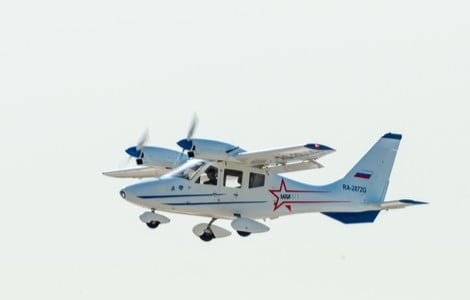
Moscow Aviation Institute has more than 160,000 alumni, 70% of whom work in industry-based corporations[13], and has produced more cosmonauts and test pilots than any other Russian university.
The university offers four undergraduate degrees:
- International Bachelor of Science in Spacecraft Engineering[14]. Drawing from the rich experience of the Soviet space program as well as the latest developments in the Russian space industry, this four-year degree trains students to work as professionals on space communication systems, satellite navigation systems and manned spacecraft. MAI students have launched nine satellites designed and manufactured in the university’s laboratories. Graduates are equipped to begin their career at leading aerospace companies like NASA, Boeing, the Korea Aerospace Research Institute (KARI), the Indian Space Research Organization (ISRO), RosCosmos, the European Aeronautic Defense and Space Company (EADS), SpaceX, Thales and Magellan Aerospace.
- International Bachelor of Science in Aircraft Engineering[15]. This degree is offered to students who are interested in inventing new aircraft and shaping the future of aviation. Course content is guided in part by professionals from Russian aircraft design companies like Sukhoi, MIG, Ilyushin, Beriev and Tupolev. Career opportunities for successful graduates include placements at aerospace companies such as Airbus, Embraer, Thales, COMAC, ATR, Cessna, Fokker and Hindustan Aeronautics.
- Bachelor of Science in Control Systems and Computer Science in Engineering[16]. This course educates students in the creation of modern avionics, electronic devices, human-to-machine interfaces and synthetic vision systems. Graduates go on to work for aerospace corporations, oil and gas companies, automakers and many other fields where automatic control system engineering is applied.
- International Bachelor of Science in Propulsion Engineering[17]. This degree is for students seeking an engineering career in one of the hi-tech industries’ most complicated fields. Studies include theoretical disciplines and advanced training in general engineering, enabling students to develop a wide range of skills from the development of turbojet engines and gas turbine power plant design to general machinery and construction engineering. Prospective employers for graduates of the course include Boeing, Airbus, Embraer, Rolls-Royce, Pratt & Whitney, Siemens, GE Power, Sauer and Subaru.
The graduate program at MAI includes these four Master’s degrees:
- International Master of Science in Aircraft Engineering[18]. This two-year degree is for graduates looking to further their studies in the creation of airliners and unmanned aerial vehicles, discover new principles of flight mechanics and structural engineering, manage all stages of the aircraft lifecycle and design professional aircraft.
- International Master of Science in Spacecraft Engineering[19] improves graduates’ knowledge of the mathematics used in ballistic calculations for aero- and space-flights, as well as advanced studies in the theory of strength and reliability. Graduates receive practical training with CAD software and can take elective courses in spacecraft subsystems.
- International Master of Science in Control Systems and Computer Science in Engineering[20] allows graduates to further their studies of automatic control engineering, sensor technologies and robotics. The program combines deep theoretical knowledge with studies of the most advanced solutions in control system design and electrical engineering.
- International Master of Science in Propulsion Engineering[21]. Graduates study all stages of the jet engine lifecycle, from the mathematical modeling of the combustion process and engine design engineering to the development of manufacturing methods and maintenance techniques. Students can explore their own breakthrough ideas under the guidance of MAI faculty members and test them in university labs.
Moscow Aviation Institute focuses on industry-relevant research and innovation, with a research and development budget of $25 million per year. Areas of research include Aviation Systems, Space Rocket Systems, New Materials and Production Technologies, Energy Systems, Information Technologies Resource Allocation, and Process of Aerospace Technologies.
MAI maintains a number of industry partnerships and has 120 cooperation contracts for research[22], which is carried out at its resource centers and research laboratories, design bureaus, mission control center, experimental pilot plant and airfield.
Kazan National Research Technical University offers 11 undergraduate and seven graduate degrees in aviation and aeronautics
Kazan National Research Technical University’s (KNRTU-KAI) Institute for Aviation, Land Transportation and Power Engineering offers a range of Bachelor and Master degrees in aerospace and power engineering[23].
Engineering Science Degrees:
- Aircraft and Helicopter Engineering
- Design of Aircraft and Jet Engines
Bachelor of Science Degrees:
- Heat-Power and Energy Engineering
- Power Machinery Engineering
- Mechanical Engineering
- Design and Engineering Support for Machinery Production
- Materials Science and Technology
- Maintenance of Transport and Technological Complexes
- Aeronautical Engineering
- Aircraft Engines
- Technical Maintenance of Aircrafts and Engines
Master of Science Degrees:
- Computer and Systems Engineering
- Heat-Power and Energy Engineering
- Design and Engineering Support for Machinery Production
- Applied Physics
- Materials Science and Technology
- Aeronautical Engineering (offered in four majors: Aircraft Design and Structure, Dynamics and Strength of Aircraft Structure Elements, Aerodynamic Design of Aircraft, and Aircraft Manufacturing Process)
- Aircraft Engines (offered in two majors: Design and Construction of Aircraft Engines and Power Facilities, and Design of Jet Engines with Solid Fuel
Research[24] is a priority at the university and is carried out in these areas:
- Aeromechanics, design and structural tests of aeronautical engineering products and structures
- Advanced composite technologies and aircraft industry materials
- Physical and technical basics and technologies for creating engines and energy-efficient units
- Control systems and information technologies in high-tech machine-building
- Radio- and opto-electronic info-communication systems and complexes
- Research and creation of nanostructured materials and technologies
- Metrology of nanostructures and nanomaterials
The long-term cooperation that KNRTU-KAI enjoys with the aviation/aerospace industry[25] across Europe and CIS countries is testament to the topicality and relevance of the university’s research program, which aims to directly influence the development of the aerospace sector in the region.
Kazan National Research Technical University opened its doors in 1932 with two departments offering education programs in Aerodynamics and Aircraft[26]. Today, KNRTU-KAI is ranked among the best technical universities in Russia with more than 15,000 students, 100 000 alumni, eight campuses, three research institutes, 11 research centers and 46 laboratories[27].
Ufa State Aviation Technical University offers four undergraduate and eight graduate programs in aviation and aeronautics
Founded in 1932, Ufa State Aviation Technical University (USATU) is one of the Russian Federation’s largest higher education institutions, with 1,500 faculty members and 16,000 students from 27 countries[28].
Aviation, aeronautics and aerospace studies are carried out through four faculties: Aircraft Engine Design, Energy and Transportation Engineering; the Institute of Aerospace Technology and Material Science; the faculty of Avionics, Energy Engineering and Infocomm Technology; and the Faculty of Informatics and Robotics.
USATU boasts a large science teaching and research facility and is the region’s only university with its own aviation park – home to Russian military aircraft like the Sukhoi Su-27 and Mikoyan MiG-29 Lightweight Multi-Role Fighter Aircraft.
Facilities on the main campus include a center for receiving and processing cosmic data, a student design bureau with micro-satellite, a center for open research resources and equipment, a 3D virtual laboratory, a computational laboratory with super-computer and a robotics lab. Engineering students also have access to the university’s aircraft engine museum, which is used as a teaching and research facility.
Research[32] is carried out in the areas of aerospace engineering and power engineering; high-loaded large-size thin parts; airborne networks and communication systems; jet engine fuel; radio photonics; advanced high-speed electric machines; coating and detail machining; nanostructures and functional materials; design/simulation/management and control of gas turbine engines; and industrial automation and information technologies.
The university has a number of partnerships and agreements[33], which allow students and faculty to access resources at national corporations, international organizations and government agencies.
Saint Petersburg State University of Aerospace Instrumentation offers four undergraduate aviation and aeronautics degrees
Saint Petersburg State University’s (SUAI) Institute of Aerospace Instruments and Systems offers students and graduates Bachelor and Master of Science degrees in the fields of Aviation and Space Technology, Computer Sciences, Information Systems and Technologies, Instrumentation and Electronics.
Studies are conducted through these departments:[34] Aerospace Measuring and Computing Systems; System Analysis and Logistics; Operation and Control of Aerospace Systems; and Aerospace Computer and Software Systems.
SUAI offers four Bachelor of Science degrees with a key focus on aerospace technology and the operation and control of aerospace systems.
Research[36] is carried out at the university’s Institute of Aerospace Instruments and Systems. Students and faculty involved in scientific research can collaborate with colleagues at French universities (Bordeaux, Paris, Toulouse and Besancon), Chinese universities (Beijing, Nanjing and Xi'an) and the University of Catania in Italy.
The university has grown[37] since 1941 to include 13 institutes and faculties and more than 40 departments offering advanced degree programs. Its facilities now include upgraded and updated computer-aided training, a center for new informational technologies, laboratories and an extensive library with over one million volumes in its collection.
Bauman Moscow State Technical University offers 3 bachelor degrees and 8 specialist degrees in aviation and aeronautics
Bauman Moscow State Technical University (BMSTU) began life as the first Russian Technical University in 1830. It now boasts 19 departments[41], has two affiliated secondary schools, and more than 19,000 students studying specialties that cover all aspects of modern machine and instrument building. The university offers Bachelor and Master degrees in aviation, rocketry, nuclear power and radio electronics.
The university offers eight Specialist Degrees[38] (these are five-year degrees that were offered in the former Soviet Union and are still offered throughout the USSR successor states):
The Faculty of Computer Science and Control Systems
- Automatic Control Systems – Aircraft Control Systems
- Orientation, Navigation and Stabilization – Aircraft Control Systems
The Faculty of Mechanical Engineering
- Spacecraft and Carrier Rockets – Design, manufacture and operation of rockets and rocket-spacecraft
- Aerospace Systems – Design, manufacture and operation of rockets and rocket-spacecraft
- Spacecraft Dynamics and Flight Control – Navigation and Ballistic Support Space Applications
- Rocket and Space Engineering Technologies – Design, manufacture and operation of rockets and rocket-spacecraft
The Faculty of Power Engineering
- Rocket Engines – Design of aircraft and rocket engines
- Gas Turbine and Nonconventional Power Plants – Design of aircraft and rocket engines
Bachelor of Science degrees[39] include:
- Rocket and Space Composite Structures – Rocket and Space Technology
- Piston Engines – Power Engineering
- Thermal Physics – Nuclear power and thermal physics
Industry-relevant research[40] at BMSTU is carried out in 36 research laboratories in collaboration with a number of organizations, corporations and agencies. The program includes several large projects, such as flight control systems of long-range spacecraft and complexes; space robots and robotic manipulators; and precise near-earth radar systems.
Peter the Great St. Petersburg Polytechnic University offers one undergraduate degree in aeronautics
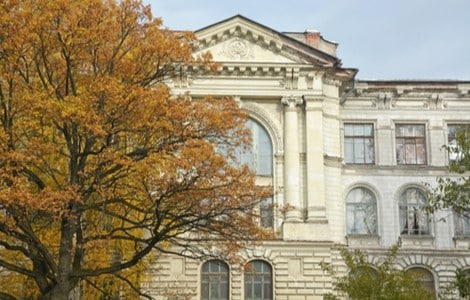
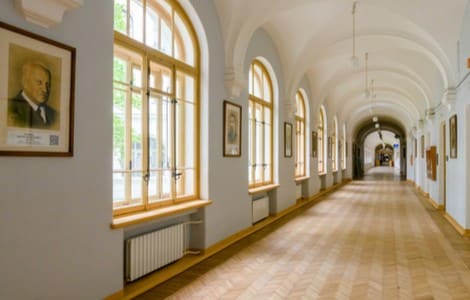
The Institute of Energy and Transport Systems at Peter the Great St. Petersburg Polytechnic University (SPBSTU) offers a Bachelor of Science in Power Machine Engineering[41] with focus areas including Aircraft Engines & Power Plants. This is a four-year degree[42], although in certain cases an additional year of preparatory study is needed to meet any linguistic, scientific or mathematical requirements.
The Power Plant Engineering division has, since 1934, taught a number of scientists who have contributed to Russia’s power industry and defense capabilities. The division remains one of the leading training centers for specialists in the areas of heat and power engineering, power engineering and transport machine building industry.
In order to further its research goals, the university has cooperative partnerships with manufacturing plants and scientific centers. Joint projects include a collaboration with RSC Energia, Russia’s leading rocket-space enterprise, to develop the high-tech manufacture of functional modules for highly integrated robotic systems for space exploration, as well as for special and general civil use[43].
Aviation enthusiasts will be interested to note the university’s contribution to the development of Russian domestic aviation[44]. It was Russia’s first higher education aviation school, offering courses in aviation and aeronautics as far back as 1909, and has also played a significant role in the development of aero engines. Aviation pioneers who have worked at the university include G. N. Nikolsky, who created the USSR’s first pilotless plane; S. A. Khristianovich, worked on the problems of subsonic aerodynamics; and L. G. Loitsyansky, who carried out research on boundary layer theory.
Moscow State Technical University of Civil Aviation offers eight undergraduate and two graduate degrees in aviation and aeronautics courses
Moscow State Technical University of Civil Aviation (MSTUCA) offers undergraduate, specialty and graduate programs[45] in aviation. While most of the courses are full-time, some can be taken part-time.
The university’s scientific research program[46] is carried out in several areas, including ‘Improving the Efficiency of Air Transport Production Management’ and ‘Sociological Aspects of Civil Aviation’. The university has seen a boost in research and development funding under direct contract with civil aviation enterprises, including a project with Russia’s national carrier, Aeroflot, which is valued at over 250 million rubles. This growth in research is reflected in the number of scientific publications and dissertations produced by university employees and graduates[47], with over 17 doctoral and 70 PhD theses published.
Samara State Aerospace University (National Research University) offers 28 undergraduate and 8 doctoral programs in aviation and aerospace
Samara National Research University (SNRU) offers Bachelor, Specialty, Master and Doctoral programs through its various institutions.
The Doctoral programs are all available in English, providing international graduates with the opportunity to further their studies.
SNRU’s fundamental and applied scientific research[50] is carried out at 36 research centers[51] and corresponds with priority areas for science and technology development. These include ‘Aerospace Engineering, Materials and Technologies’ and ‘Aircraft Structure, Onboard Systems and Equipment’.
In recognition of the role the university has played in advancing science research and technology[52] to solve economic, social and industry issues, in 2006 Samara was named one of Russia’s top innovative universities. It was awarded National Research University status in 2009 and became one of the country’s top 15 universities in 2013.
Southern Federal University offers one undergraduate aeronautics degree
Southern Federal University (SFedU) offers a Bachelor of Science in Technical Operation of Aircraft and Engines.
One of Russia’s first universities[53], SFedU is now a major academic and scientific hub for innovative research. Its approach to education integrates the educational process with fundamental and applied scientific research, based on cutting-edge technologies and techniques.
The university has a large academic program, which includes 53 Bachelor degrees, 80 Master degrees (including 200 specialized courses), 18 Specialist degrees and 25 postgraduate educational research programs. There are 2,600 academic and research staff.
SFedU places an emphasis on its foreign students, offering education at a global standard. Of its 31,200 students, 1,900 are international; and over 7,000 professionals from 120 countries have graduated from SFedU since 1948.
The undergraduate Aerospace Engineering with Pilot Studies course takes three years to complete full-time or four years with a sandwich year; while the undergraduate Aerospace Engineering option takes four years full-time or five years as a sandwich course. Designed to answer an increasing demand for qualified aerospace engineers, both courses are created in collaboration with aerospace partners and students have access to high-tech facilities such as subsonic and supersonic wind tunnels, flight simulators and core modelling software. They can also visit airport sites and participate in international design competitions.
The university boasts 221 research[54] laboratories that carry out research in areas including ‘Marine, Aviation and Space Rocket Equipment, Radio Engineering, Automation and Control’.
5. Summary and thoughts about the future of aviation and aviation studies
Several key factors will continue to affect the aviation industry for at least the next decade:
- A dramatic increase in air travel, which is expected to double in the next 20 years[55].
- The growing demand for aircraft in Russia is being driven by increased air traffic[56] – between 2001 and 2012, the average growth of passenger traffic increased by 11.4% annually and cargo traffic increased by 6.1% annually. International air traffic is the fastest-growing market segment, with most domestic air traffic being long-distance flights, mainly through Moscow. Since 2012, the Russian government has intensified its efforts to support regional aviation to outlying regions and meet regional air traffic demands. These initiatives are expected to increase air traffic by between 6.3 to 7.8% annually in the next 20 years.
- The Russian aerospace industry is generously funded by the state, which has to an extent protected it from global economic fluctuations.
- An important new alliance – known as the China-Russia Commercial Aircraft International Corporation (CRAIC), based in Shanghai – has been forged between Russia and China[57] in the lucrative wide-body airliner market. The purpose of the alliance is to boost Russia’s aircraft manufacturing sector and help meet growth in Chinese regional aviation – expected to quadruple over the next 20 years. Boeing estimates that China will constitute the largest domestic airline market in the world by 2036. This will require 41,030 new aircraft, worth ₽401, 329, 980000 trillion, from the global market.
- In addition to the China-Russia alliance, the European Union (EU) is Russia’s largest international aviation market[58], with more than 40% of Russian passenger traffic directed towards EU destinations. It’s a similar scenario for air freight – Russia is the eighth most important extra-EU partner, with an average growth rate of 16% from 2013 to 2018.
For students deciding on a career path, there has never been a more exciting and opportune time to work towards an aviation, aeronautics or aerospace qualification. Air transport will continue to grow for decades to come, and this dramatic increase in air travel will present new opportunities for scientists, aviation mechanics and professionals to create the aviation industry of the future.
If you believe you have what it takes to become one of the aviation or aerospace greats of tomorrow, then speak to us about applying for a course at your aviation school of choice and we’ll do our best to provide some helpful advice. Air Charter Service also provides aviation and flying scholarships for many of the best aviation universities in Russia and around the world. Find out more on our Aviation Scholarships and Student Grants page.
6. A quick word to the universities featured
Are you a representative of one of the universities featured in this study? If you’d like to provide us with more up-to-date information or get in touch for any other reason, feel free to reach out on our contact page.
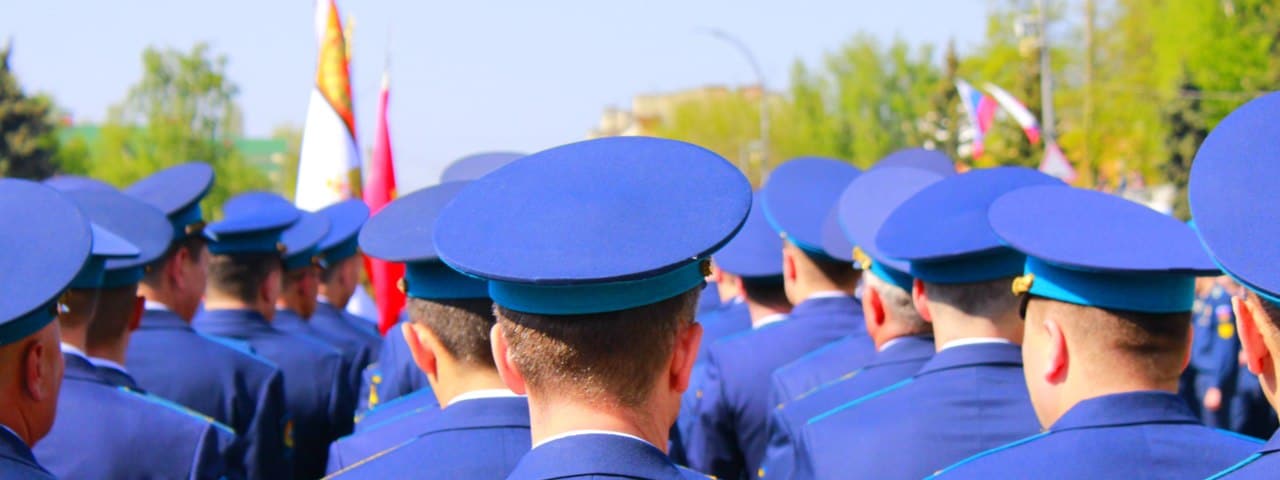
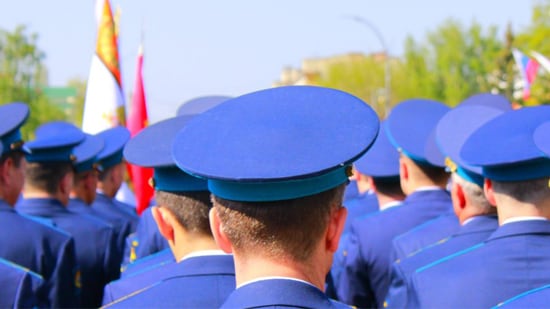 In this report, we take an in-depth look at some of Russia’s universities and colleges offering aviation and aeronautics courses, including a comparison of the costs, courses offered, the content included, and how long it takes to study each course.
In this report, we take an in-depth look at some of Russia’s universities and colleges offering aviation and aeronautics courses, including a comparison of the costs, courses offered, the content included, and how long it takes to study each course.



